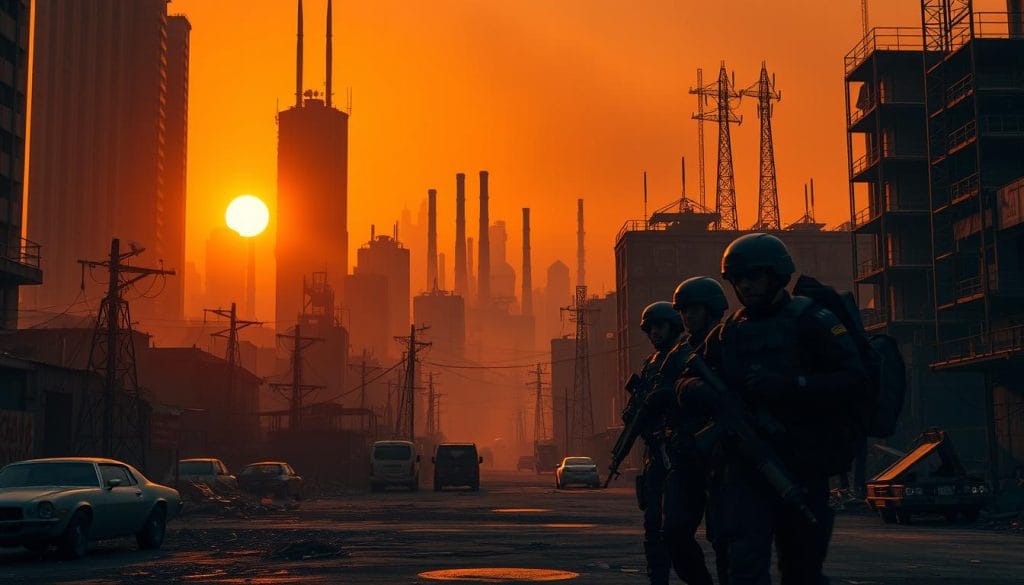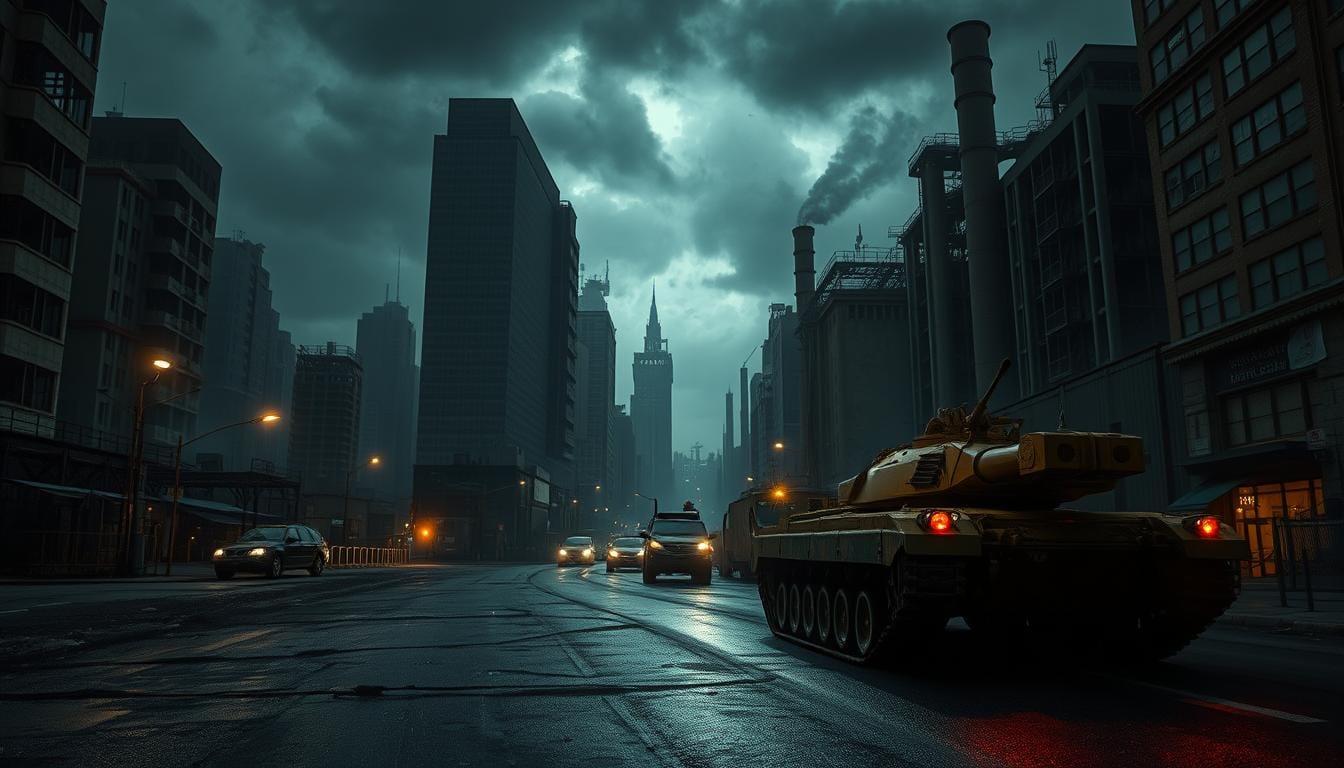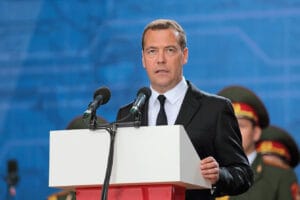Trump Considers Using The Most Dangerous Cities for Military Training

Trump Considers Using The Most Dangerous Cities for Military Training
Dangerous Cities for Military Training: At Quantico, President Donald Trump told senior leaders that American streets could become “training grounds” for troops. He said this to protect the homeland and boost military readiness in urban areas. The message was clear: a federal crackdown on crime, seen as “a war from within,” focusing on Dangerous Cities for Military Training.
Trump pointed out Chicago and New York City, saying they are unsafe and need to be addressed “one by one.” He asked Defense Secretary Pete Hegseth to explore using cities with high crime rates for military training, hinting at potential near-term moves in Chicago. NBC News and The Guardian reported his support for sending forces into cities and quick-reaction training, including references to training grounds for our military.
Supporters believe the plan would make military training in urban areas more effective and quicker to respond to civil unrest. Critics, on the other hand, worry it could escalate tensions and undermine local control. With National Guard deployments in Washington, D.C., and Memphis, and talk of Portland next, the stakes for military readiness and civil liberties are high.
Dangerous Cities for Military Training: Key Takeaways
- Trump floated using Dangerous Cities for Military Training to boost rapid response and deterrence.
- Chicago and New York City were cited as early targets for federal intervention.
- Backers frame it as protecting the homeland and improving military training in urban areas.
- Opponents warn the approach could inflame tensions and test the local authority.
- National Guard deployments and quick-reaction training efforts are already underway.
- Media reports have detailed discussions about troops in cities and expanded readiness.
Trump’s Proposal and Its Context to Use Dangerous Cities for Military Training
Donald Trump spoke at Marine Corps Base Quantico to top military leaders. He called urban crime a “war from within.” He suggested using city streets for military training.
He mentioned Chicago and New York City, stating that they need military assistance. Trump wants troops to practice in real neighborhoods. This would prepare them for missions in complex areas.
He also talked about Chicago and New York City. He wants to use these cities for training. This would help troops get ready for missions in urban areas.
Trump’s plan is to make cities safer by training law enforcement officers within them. He believes this will help troops prepare for real-world missions. This approach is seen as a way to defend the homeland.
Trump’s idea is to send troops to cities like Washington, D.C., and Memphis. He also wants to deploy troops in Portland, Oregon, during protests. He mentioned Pete Hegseth in his speech, indicating that it’s part of a broader plan to combat crime.
Governors and mayors are opposed to it, arguing that it could exacerbate the situation. Civil rights groups also oppose it, saying it’s too much like war. For more on Trump’s comments, see this summary.
Key claim: “We should use some of these dangerous cities as training grounds for our military—National Guard, but military.” This shows why some people think it’s a good idea for national security.
| Element | Details | Relevance to Training | Public Response |
|---|---|---|---|
| Stated Goal | Homeland defense emphasis at Quantico | Aligns drills with domestic threat scenarios | Backed by supporters focused on readiness |
| Targeted Locations | Chicago, New York City, San Francisco, Los Angeles | Complex terrain for dangerous urban environments training | Local leaders raise legal and civil liberty concerns |
| Forces Involved | National Guard and active-duty units | Combines crowd control, intel, and logistics | Debate over mission creep and authority |
| Recent Actions | Deployments tied to Washington, D.C., Memphis, and Portland | Shows operational template for urban drills | Protests and lawsuits challenge the scope |
| Stated Rationale | “War from within” framing of crime spikes | Position unsafe cities for military exercises as necessary | Critics warn of escalated tensions and overreach |
Potential Impact on the Dangerous Cities for Military Training
Using risky cities for defense training would focus on areas like Chicago, New York City, and Portland. Supporters view it as a means to enhance military readiness in urban areas. Critics, though, worry it could lead to policing in disguise. Recent talks at Quantico about high-risk cities military drills show how quickly this idea could grow.
Increased Military Presence in Urban Areas
More deployments would turn cities into training grounds for military skills. National Guard units would work alongside local police. This would make cities safer for military training and set up bases in key locations.
In Washington, D.C., constant patrols and checkpoints have changed daily life. There’s a debate over the benefits and drawbacks of military presence. For more on this, see this analysis of deployments and public safety from defense training danger zones.
Response from Local Governments
Governors and mayors in targeted cities stress their right to make decisions. They worry about the impact of large military missions on local plans. Federal officials, though, point to crime trends to justify military drills.
As plans are made, emergency managers look at disaster readiness. They review traffic control, medical support, and public alerts. The question now is if military training in risky cities can meet national goals without disrupting local life.
Dangerous Cities for Military Training Conclusion
Trump wants to use dangerous cities for military training. He views it as a means to combat crime at home, not just abroad. This idea is similar to past uses of the National Guard in cities like Washington, D.C., and Memphis.
Mayors and governors strongly oppose this plan. They fear it could increase tensions and harm civil life. Critics argue that it’s too aggressive and could compromise civil liberties. Supporters believe it can protect communities and help soldiers gain valuable experience.
The legality of this plan is uncertain. It raises questions about the military’s role in these areas. The White House sees crime as a domestic war. Success will depend on clear goals and trust from residents.
Voters must decide if they support this defense-first approach to safety. This debate links city safety to national strategy. For more on this, see strategic ambitions and impact areas that could be affected.
Dangerous Cities for Military Training FAQ
What did President Donald Trump propose regarding using American cities as “training grounds” for the military?
President Trump suggested using high-crime cities as training areas for the National Guard. He sees this as part of a broader effort to defend the homeland. He wants to crack down on crime in major cities.
Which cities did Trump cite as unsafe or targeted for possible deployments?
Trump mentioned that Chicago and New York City need to be straightened out. He also discussed Washington, D.C., Memphis, and Portland for potential Guard or troop deployments. New Orleans was another city he mentioned.
What actions has the administration already taken that align with this proposal?
The White House sent National Guard to Washington, D.C., and Memphis. They plan to send troops to Portland. Trump has threatened to send troops to Chicago, New York, and New Orleans, too.
How did Trump describe the threat posed by crime in major cities?
He called it a war from within. He said America is under invasion from within, like a foreign enemy. He noted the challenge of actors who don’t wear uniforms.
What role did he say Defense Secretary Pete Hegseth would play?
Trump instructed Defense Secretary Pete Hegseth to use cities with high crime rates for military training. This suggests that the Defense Department might become involved in defense training in high-risk cities.
What legal or political pushback has the proposal faced?
State and local officials in targeted cities are worried. They believe that federal deployments could exacerbate the situation. Democratic leaders say it’s like an authoritarian tactic, raising constitutional questions.
How might this impact day-to-day life in the affected cities?
Residents may notice an increase in the presence of military personnel and vehicles in their neighborhoods. The mix of Guard and active-duty roles could lead to more frequent drills. This could affect traffic, gatherings, and local policing.
What is the difference between National Guard and active-duty military involvement?
The National Guard often works under state authority and helps in emergencies. Active-duty deployments in cities raise legal and operational issues. This includes rules of engagement and federal authority.
Why are cities like Chicago and New York City central to this debate?
Trump wants to tackle high crime rates in these cities. Their size, leadership, and media presence make them key in discussions about military training in urban areas.
What could “training grounds” mean in practice?
It might mean urban readiness exercises and patrols in complex areas. It may also involve collaborating with local law enforcement and managing logistics in high-risk locations. The specifics depend on legal agreements and mission goals.
Have federal troops been used in U.S. cities before?
Yes, in specific situations, often in response to federal authority or local requests. The current plan links military drills in high-risk cities with ongoing crime control and expanding military readiness in urban areas.
What are the possible risks and benefits of this approach?
Supporters argue that it could deter crime and enhance readiness in urban environments. Critics worry that it could escalate tensions, blur the lines between military and civilian roles, and challenge local governance in high-crime cities.
What happens next? What are the most dangerous cities for military training?
Next steps involve coordination among the White House, the Department of Defense, governors, and mayors. Legal challenges, public response, and logistics will determine if deployments expand to more cities. Like New York, Detroit, Chicago, and more..







